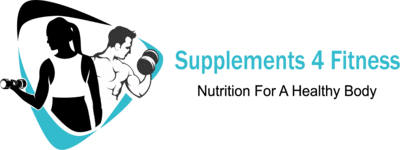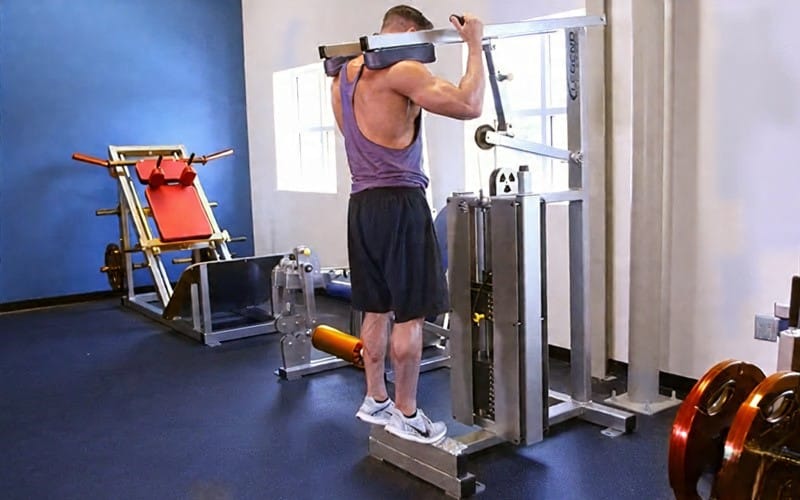The standing machine calf raise is more than simply a lower-leg exercise; it’s a direct road to shaping your gastrocnemius, increasing explosive ankle strength, and improving aesthetic and athletic performance. Learning this solitary exercise will improve your calf training outcomes regardless of your level of experience.
What Is the Standing Machine Calf Raise?
The standing machine calf raise is a bilateral push exercise targeting the calf muscles, especially the gastrocnemius, the larger and more visible upper part of the calf. It’s performed using a calf raise machine where your shoulders support a padded load while your feet press off a platform.
- Primary Muscle Worked: Gastrocnemius
- Secondary Emphasis: Soleus (stabilizer), Achilles tendon, ankle flexors
- Equipment Used: Standing Calf Raise Machine
- Level: Beginner to Advanced
Calf Anatomy 101: Why the Standing Variation Matters
The calf is made up of two key muscles:
-
Gastrocnemius – The “show muscle,” responsible for the calf’s prominent shape. It activates most during knee-extended exercises like the standing calf raise.
-
Soleus – Deeper, flatter, and more endurance-based. It responds better to seated variations where the knees are bent.
Because the standing machine calf raise keeps the knees extended, it is the ideal movement to prioritize gastrocnemius hypertrophy.
How to Perform the Standing Machine Calf Raise Correctly
Setup:
-
Adjust the shoulder pads based on your height.
-
Step onto the platform, placing the balls of your feet firmly on the edge. Heels should hang off.
-
Keep your feet shoulder-width apart and toes pointing forward.
Execution:
-
Raise your body by plantar flexing your ankles — lifting your heels as high as possible.
-
At the top, pause and squeeze the calves for 1–2 seconds.
-
Slowly lower your heels below the platform until you feel a full stretch in your calves.
-
Repeat for 12–15 reps for hypertrophy, or 6–8 reps with heavier weight for strength.
⚠️ Form Tips and Common Mistakes
|
|---|
💡 Pro Tip: If you feel pain in the knees or arch of your foot, reduce the range or add a slight bend in your knees to relieve pressure.
🔁 Standing vs. Seated Calf Raises: What’s the Difference?
Which is better – seated or standing calf raises?
|
|---|
Combine both in your routine to maximize full-calf development.
Benefits of Standing Machine Calf Raises
-
🔸 Calf Isolation: Minimized hip/knee involvement enhances muscle engagement.
-
🔸 Explosive Strength: Improves jumping, sprinting, and directional change.
-
🔸 Aesthetic Appeal: Builds the “diamond” shape that enhances lower-leg proportions.
-
🔸 Ankle Mobility & Stability: Reinforces joint health for runners and athletes.
Muscle Fiber Type Training Tip
The gastrocnemius is composed largely of fast-twitch muscle fibers, meaning it responds well to:
-
Heavier loads
-
Lower rep ranges
-
Explosive contractions
-
Deep stretch & full ROM
Use drop sets, tempo training (e.g., 3:1:2), and isometric pauses at the top to force growth.
Calf Raise Variations and Alternatives
Looking to spice up your routine or train at home? Try these:
Machine-Based:
-
Smith Machine Calf Raise
-
Leg Press Calf Raise
Minimal Equipment:
-
Dumbbell Calf Raise
-
Band-Resisted Calf Raise
-
Chair Calf Raise
Functional & Athletic:
-
Stepmill Calf Extensions
-
Jump Rope (Toe Bounces)
Search Intent Match: “What are the best alternatives to standing calf raises?”
🗂️ Programming: Sets, Reps, and Frequency
|
|---|
Train calves 2–3x/week, ideally on lower body or accessory days.
Final Thoughts: Why Your Calves Deserve More Attention
The calves are often neglected because results come slow. But consistency, proper load, and smart programming using movements like the standing machine calf raise will separate you from 90% of lifters. Don’t skip calf day — build from the ground up and add definition that commands attention.
Pro Coach Insight
“Most people train calves with high reps and light weight. Flip the script — go heavy, stay strict, and train with intention. That’s how you build calves that pop.”
— Certified Strength & Conditioning Specialist
You may want to read about “How Long to Walk 2 Miles? Pace, Time & Health Benefits“
Frequently Asked Questions
Q: What muscles does the standing machine calf raise work?
The standing machine calf raise primarily targets the gastrocnemius muscle, which gives the calf its size and shape. It also indirectly engages the soleus and improves ankle flexor stability.
Q: Is standing or seated calf raise better for muscle growth?
Both have unique benefits. The standing calf raise emphasizes the gastrocnemius, ideal for building size and definition. The seated version targets the soleus, which improves endurance and stability. For full calf development, include both in your routine.
Q: How often should I do standing calf raises?
For optimal results, train calves 2–3 times per week. Calves recover quickly due to their high endurance fiber composition, so more frequent training often leads to better growth.
Q: Should I go heavy or light on calf raises?
Use a combination of heavy, low-rep sets to target the fast-twitch fibers in the gastrocnemius and moderate to high-rep sets for endurance. Prioritize form and range of motion over excessive weight.
Q: Can I use the calf raise machine if I’m a beginner?
Yes, the calf raise machine is beginner-friendly and allows for controlled movement and proper isolation of the calf muscles. Start with light resistance to master the form before increasing the load.
Q: Why don’t my calves grow, even with calf raises?
Common reasons include poor form, lack of variation, insufficient volume, and training the calves too infrequently. To fix this, ensure full range of motion, pause at the top, stretch at the bottom, and progressively overload.
Q: What are some alternatives to standing machine calf raises?
Alternatives include:
-
Dumbbell calf raises
-
Smith machine calf raises
-
Leg press calf raises
-
Resistance band calf raises
-
Jump rope toe bounces
Each offers a slightly different emphasis on muscle recruitment and flexibility.
Q: How many reps should I do for calf definition?
For definition, perform 12–20 reps per set, focusing on slow, controlled movement and a strong contraction at the top. Include drop sets or supersets for added intensity.
Q: Can standing calf raises improve athletic performance?
Yes. Strong calves enhance explosiveness, sprint speed, vertical jump, and overall ankle stability, which are crucial in most sports.
Q: Should I keep my knees locked during standing calf raises?
No. Avoid completely locking your knees. A slight bend ensures the load stays on the calves and reduces unnecessary strain on the joints.

